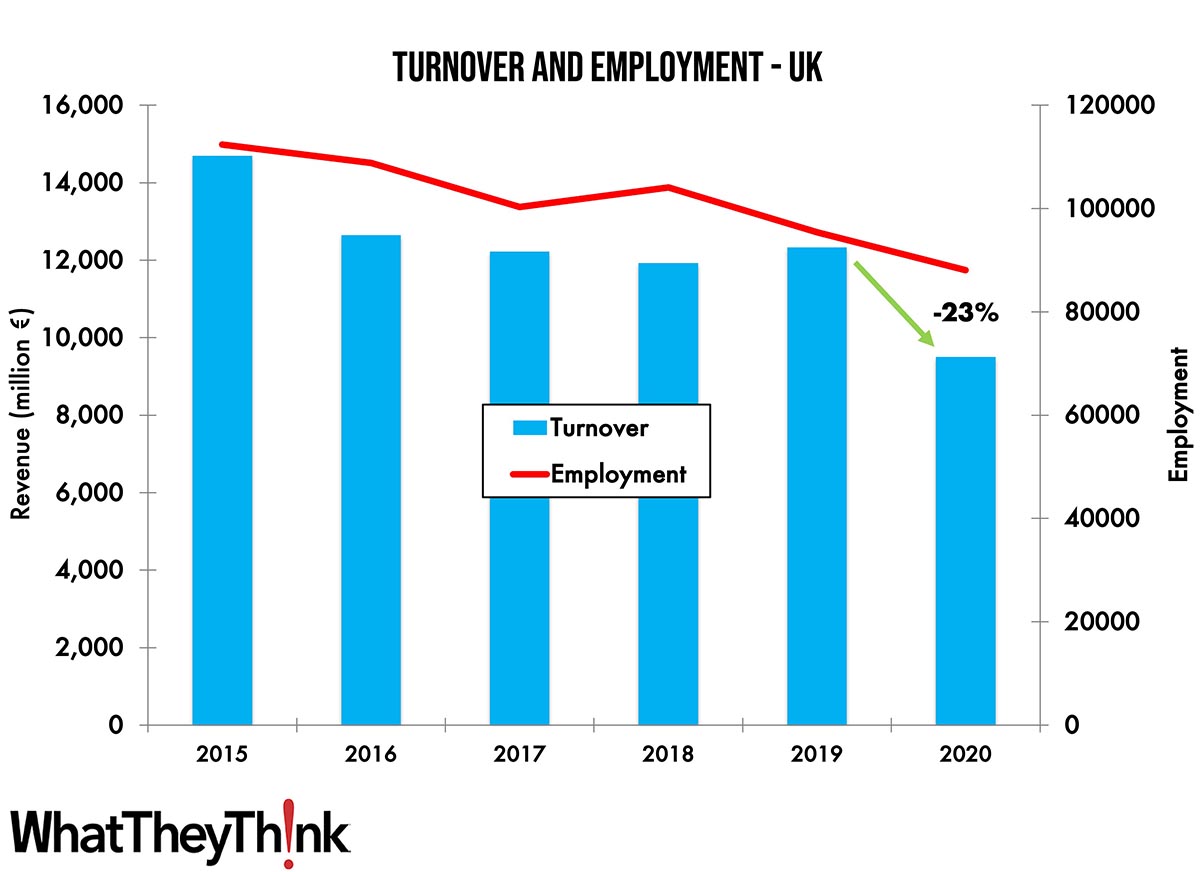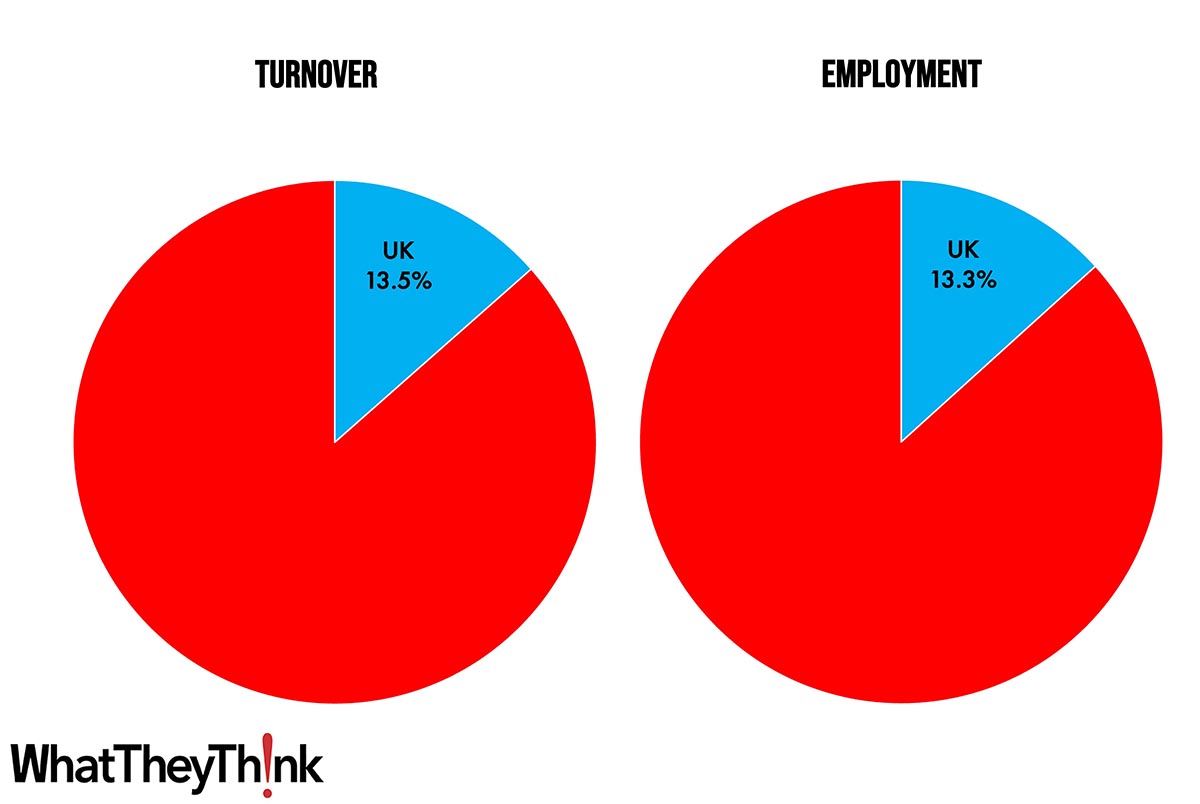Finally, the full results on turnover (that is, revenues) in the printing industry in Europe for 2020 are in—after index data was the only source for print volume developments during the pandemic. While the index data only allowed for volume developments, now real turnover data is available, even if the data is far from perfect. The UK stopped reporting data to Eurostat after 2018 (although some non-EU countries do report data to Eurostat), hence the 2019 and 2020 data have been compiled from UK national statistics. To make the data comparable across Europe all revenue has been converted from pound to euro, either as part of the Eurostat reporting or based on the annual average pound-to-euro exchange rates for the respective years.
The turnover for commercial printing in UK dropped steeply from 2015 to 2016 but remained relatively stable around the €12 billion mark in the following years. This was followed by a decisive 23% drop to €9.5 billion in 2020—one of the fastest decline rates in Europe. Excluding currency exchange effects, the decline would have been -21.9%. The number of persons employed had a steady decline with a small exception in 2018. Numbers declined from just over 112,000 in 2015 to about 88,000 in 2020. The 7.7% decline in employment in 2020 was higher than the average decline of 3.2% in the years before, but not as steep as the drop in turnover.

Source: Eurostat 2022, UK Office for National Statistics, and digitalprintexpert.de
Overall, the printing industry in the UK accounts for 13.5% of the total European printing industry, falling between Germany and Italy. In terms of the number of employees in print, the European share of the UK is almost the same at 13.3%.
UK - Share of Turnover and Employment in Commercial Print in Europe, 2020

Source: Eurostat 2022, UK Office for National Statistics, and digitalprintexpert.de
Based on Eurostat numbers for turnover and the number of employees in the printing industry, the average annual turnover per employee can be calculated. The €129,316 for 2019 is slightly higher than the European average and at roughly the same level as Germany and Italy. The employment number does include part-time employees and owners with a salary. The year 2019 has been chosen for the comparison as 2020 could have been impacted by the COVID-19 pandemic.

Source: Eurostat 2022, UK Office for National Statistics, and digitalprintexpert.de
Please keep in mind that the data is based on Eurostat numbers for printing and related services (complemented by some estimates), which consists mainly of commercial and publishing printing, including prepress and finishing companies. That means that packaging, data center, direct mail print, or quick print/copy shops are not included or only on a limited basis. In house print/CRD are not included at all. Europe as used in the series of articles includes the EU countries plus Norway, Switzerland, and the UK. If you have questions about sizing the European printing industry or need clarification, please contact me at [email protected] .
This series on the turnover and employment development in commercial print in Europe continues. Next time we will have a look at the printing industry in Spain.









